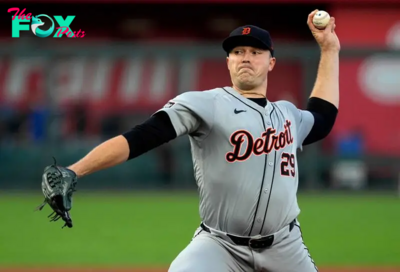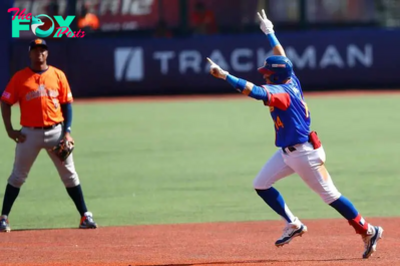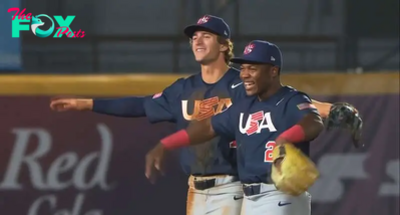MLB
Kids needing Tommy John surgery exposes the failings in our youth baseball culture
You will find it difficult to name a pitcher better than Sandy Koufax. He was a seven-time All-Star, won three Cy Young Awards back when there was only one for both major leagues. He won all three unanimously. Koufax won four World Series, two of which he was named MVP, threw four no-hitters and a perfect Game in a twelve-year MLB career. He remains, over half a century later, on the very short list of pitchers who retired with more career strikeouts than innings pitched.
The tragedy? He threw his arm off. Arthritis and constant pain in his throwing arm ended it all while he was at his peak. He was 30 years old.
Seven years after Koufax exited the stage, a 31-year-old left-hander with a masterful curve ball named Tommy John also threw his arm out. Tearing his ulnar collateral ligament, he underwent a groundbreaking surgery to repair it and made a comeback. The surgery now bears his name and it has resuscitated the careers of many great pitchers.
But there is a worrying trend in baseball these days. While both Koufax and John, and a host of pitchers before them, were in the middle of professional careers, both over 30 years old, more and more these days, the surgery to repair blown out arms is being performed on children.
According to a study by Chicago’s Rush University Medical Center, the biggest age group needing Tommy John surgery in the country is between 15 and 19 years old. Kids whose arms have not yet fully developed now account for 57% of all surgeries nationwide.
The son of the pitcher whose name graces the procedure, Dr. Tommy John, now practices sports chiropractic medicine in San Diego. “I’m seeing an injury rise in young athletes and it’s getting younger and younger and more severe. This most absolutely is a national problem, and it’s something that’s bigger than one sport. In the past, we were dealing with common youth injuries, like broken bones and bruises, but now we’re seeing pediatric ACL reconstructions, concussions, Tommy John surgeries and stress fractures in spines. Quite simply, kids are being pushed beyond their limit.”
What is causing this rise in Tommy John surgery?
As in any situation where surgery is on the rise, there are several overlapping factors, but the principal one seems to be the rise in year-round training.
With the stratospheric rise in sports salaries and MLB salaries in specific, parents and coaches find the temptation to try and find the next prodigy too great to ignore. But let’s not lay the blame all at the parents’ feet. Often they are given “advice” by coaches and trainers who see these kids as cash cows, funnelling more and more kids into their multi-billion dollar industry for nothing more than quick profit. Children as young as eight are being encouraged; and I only say that so as not to say “coerced” or “forced”; to play baseball all year.
Summer leagues used to be a short wind-down from prep baseball, lasting two months at most. Kids were encouraged to play all sports; baseball in summer, but then football and basketball in the winter, plus tennis, golf, swimming, and in fact any other athletic endeavor on offer.
No longer.
With the rise of travel ball and winter ball leagues since the 1990s, young kids are carrying a workload that leads them to have the worn out arms of ten-year MLB veterans by the time they hit their mid teens.
Tommy John, the former MLB southpaw, who managed to come back after his surgery to pitch even better than before says, “This is about more than just baseball and elbows. It’s about the way we are raising our children. The nation’s youth-Sports industry is a $15 billion Business. And more and more, that Business pushes children to make decisions early about which sport they want to play, and then to pursue that sport to the exclusion of all others. And kids’ bodies are paying the price.”
The quest for speed
So you want to work on your kids pitching? With ample rest and within the bounds of safety, still you want to train that young arm the best way? Stop looking at how fast they throw.
The incessant focus on speed and speed alone is not only damagingly myopic in a baseball sense, it is dangerous and adds to the stress on young, underdeveloped arms.
The best thing to focus on is control. Pinpoint accuracy. Once they become masters of control, and their arms are intact, a good college or minor league pitching coach can squeeze the best out of them. But for now, 85mph with good movement is better than a 95mph four seamer with no ride.
This is difficult for parents, young players, and coaches alike. I get it. There used to be control pitching and power pitching and in the last decade or two, the MLB seem to have gone all in on power pitching. But it is not a blazing fastball that is going to punch little Johnny’s ticket to the Show. It is his ability to work a batter.
A 100mph pitch used to be a near-as-dammit guaranteed strike. But as pitchers have begun to hone in on that benchmark, so have hitters. And hitters have improved in line with pitchers. They can get around on that fastball. Maybe not everyone can make solid contact. But everyone, and that means absolutely everyone, can at least foul it off. Making a power pitcher throw that power pitch again is the way to beat a power pitcher. Anyone who has played video Games will understand that power and durability are inversely proportional. The answer? Control.
One of the greatest control pitchers ever, Greg Maddux, once said that when he found that he was losing control, he slowed down. Not just the process, but the pitches themselves. He worked on control, control, and then more control.
Let’s talk about the pitch clock
For those of us who hate the pitch clock - yes, I’ll pin my colors to the mast on this one - we have to accept that we have lost this fight. Owners love it, broadcasters love it, casual fans love it, and it is here to stay.
Having said that, we can’t ignore the fact that the concept of doing more work on less rest, is one of the leading causes of injury in any sport, whether that is weight lifting, running, or in this case throwing a baseball.
MLB Players Association executive director Tony Clark specifically blamed the pitch clock for the rise in pitcher injuries in a statement, saying:
“Despite unanimous player opposition and significant concerns regarding health and safety, the Commissioner’s Office reduced the length of the pitch clock last December just one season removed from imposing the most significant rule change in decades.
Since then, our concerns about the health impacts of reduced recovery time have only intensified.
The league’s unwillingness thus far to acknowledge or study the effects of these profound change is an unprecedented threat to our game and its most valuable asset -- the players.”
The league answered that an analysis by Johns Hopkins University showed no correlation between the pitch clock and injury risk. However, the analysis in question has not been made public. MLB is saying, “Trust us.” In effect, the league is blaming not the clock, but the quest for speed as the key factor. “Move along, people, there’s nothing to see here.”
What does this mean for your kids? Well, let’s be brutally realistic. If your twelve-year-old can’t throw a strike, another five mph won’t help. And if he can throw strikes, teams will use him, scouts will love him, and best of all? His arm won’t fall off.
So what can you do right now? First of all, stop playing baseball all year. Take a break. Play basketball, or soccer, or swim, or skateboard, or whatever else your kid likes to do.
And then, when you go back to baseball, just focus on strikes. Try to hit a spot at the top of the zone, the bottom of the zone, inside, outside. All two seamers, all control.
And if your coach tells you that that your kid needs to play more baseball? Find yourself a different coach. This one is not fit for purpose.
-

 MLB3d ago
MLB3d agoMLB dumps Puerto Rico and Mexico from 2025 schedule
-

 MLB3d ago
MLB3d agoWill the Yankees and Dodgers end up trading power hitters?
-

 MLB3d ago
MLB3d agoVenezuela vs Japan: Date, times, how to watch 2024 WBSC Premier12 Super Round on TV, online
-

 MLB3d ago
MLB3d ago2024 WBSC Premier12 Super Round: Who plays Nov. 22? Times, TV and streaming
-

 MLB3d ago
MLB3d agoChinese Taipei vs USA: Date, times, how to watch 2024 WBSC Premier12 Super Round on TV and online
-

 MLB3d ago
MLB3d ago2024 Cy Young Awards crown Tarik Skubal and Chris Sale
-

 MLB3d ago
MLB3d agoUSA vs Japan: Times, how to watch 2024 WBSC Premier12 Super Round on TV and online
-

 MLB4d ago
MLB4d agoChinese Taipei vs Venezuela: How to watch 2024 WBSC Premier12 Super Round on TV and online



























